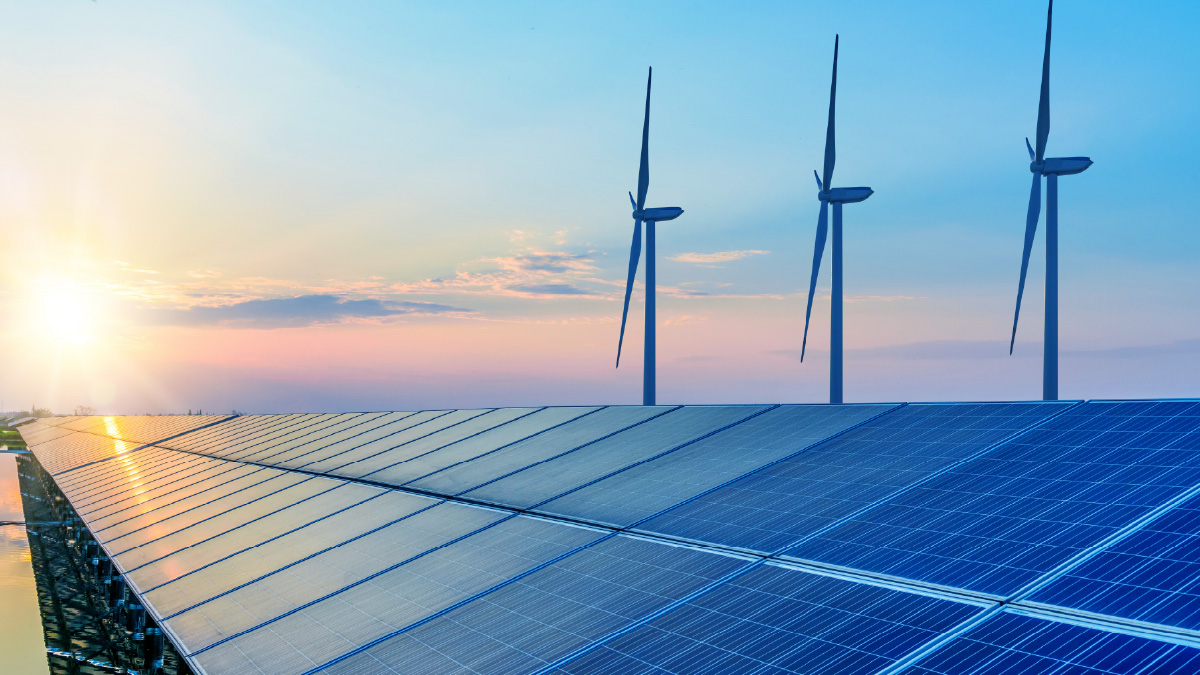Energy efficiency is so important that the National Resources Defense Council called it “America’s largest energy resource.” These solutions have done more to meet the country’s energy needs than oil, gas, and nuclear combined over the last 40 years.
While past energy conservation efforts have built a strong foundation, there is still work to be done to create sustainable energy solutions that match rapidly growing demand. Fortunately, public-private partnerships have stepped up to offer vital support that helps improve energy efficiency for households and businesses.
The Current Situation: Why is energy efficiency important today?
Energy efficiency is not a new concept, or even a new problem. In fact, the first standards for energy efficiency were enacted at the state level in 1974 and the federal level in 1975.
Since that time, several factors have propelled the need for greater energy security to the forefront of conversations. First, energy consumption has increased, which has also raised concerns about the future of the power grid. Second, federal policy has changed dramatically – sometimes in favor of energy security, sometimes away from it. Third, renewable energy solutions already exist that can combat existing shortcomings.
Energy Usage Has Skyrocketed, Raising Concerns About the Power Grid
Electricity usage in 2022 was 4.07 trillion kWh – the highest amount ever recorded and about 14 times greater than electricity consumption in 1950. It is simple to blame commercial technological innovations for the rapid increase in energy needs, especially since AI data centers use about 4.4% of all U.S. electricity. However, this narrow view ignores the staggering fact that residential electricity sales make up the largest share of energy consumption at 38.4%.
The rapid increase in electricity usage has raised concerns about the stability of the power grid. These demand-focused concerns are further compounded by extreme weather which has caused the biggest disruptions to the power grid in the last twenty years.
Federal Energy Efficiency Policy Shifts Rapidly
Like most economic issues, energy security policies are highly dependent on the goals of elected officials at any given time. For example, a recent push to reduce government spending resulted in the termination of $3.7 billion in awards issued by the Office of Clean Energy Demonstrations.
Renewable Energy Is Resilient Despite Policy Uncertainty
Despite federal shifts in energy efficiency policies, renewable energy remains a growing industry. Worldwide, expectations show that renewable energy capacity will grow by 5,500 gigawatts before 2030 – almost three times the increase seen between 2017 and 2023. Solar alone is expected to grow an additional 80% by 2030, resulting from the construction of new plants and an increase in rooftop panels.
Looking ahead, Paul Denholm, senior research fellow of model engineering and a grid analyst of nearly 20 years at National Renewable Energy Laboratory says that renewable energy is the future. He asserts that conventional fossil fuel plants will transition to a supplemental form of energy generation to make room for renewable sources.
Denholm paints a rosy picture, but the question remains: how will we achieve a renewable energy transformation? One current solution stands out above the rest – public-private partnerships [PPPs].
The Path Forward: Public-Private Partnerships Provide Energy Solutions
PPPs in the energy sector are built from collaboration between governments and private companies to deliver energy infrastructure or services. The private sector generally provides financing, expertise, and technology, while the government develops supporting policies and regulatory frameworks.
The collaboration between government and the private sector helps drive systemic projects – those that can’t be funded by private means alone. These projects include residential retrofits and incorporation of new energy solutions that homeowners might not otherwise consider, and a myriad of projects available for businesses to tap into energy efficient construction improvements.
Energy Efficiency PPPs In Place Today
One of the best examples of PPPs in the energy sector is the National Clean Energy Investment Fund. It was created by the Inflation Reduction Act and includes $14 billion in grants to create and expand financial markets in the renewable energy sector.
While the grants are administered by the Environmental Protection Agency [EPA], the recipients are deploying the funds through partnerships with private-sector investors, developers, communities, and other private entities. Financing through these private-sector groups benefits local governments and quasi-government entities as well as small businesses and consumers in their efforts to reduce greenhouse gas emissions.
Another solution created by the Inflation Reduction Act is Solar for All – a $7 billion grant program that was designed to bring solar energy solutions to over 900,000 households. This program targets low-income and disadvantaged communities through awards to states, Tribes, and multistate programs.
The Inflation Reduction Act spurred investment in renewable energy, but numerous state level programs also support this goal through different funding sources. Two of the most well-known programs are Commercial Property Assessed Clean Energy [C-PACE] and Residential Property Assessed Clean Energy [R-PACE].
Both C-PACE and R-PACE programs are adopted by states and implemented by local governments with support from private companies. This structure has proven effective with C-PACE financing supporting upgrades for over 2400 commercial buildings, and R-PACE programs resulting in more than 300,000 home upgrades since 2015.
Other state programs offer a broad range of energy efficiency solutions that lower energy costs and reduce greenhouse gas emissions through PPPs. These programs are also supporting job growth, power grid reliability, and the local economy.
Challenges to Implementing Public-Private Energy Partnerships
Private sector companies often face headwinds when implementing a new program or growing an existing one. In particular, administering thousands of consumer and business loans becomes a significant challenge to traditional lenders, particularly as the program grows rapidly.
The origination and loan administration responsibilities for PPP programs include collecting payments, managing paperwork, conducting non-automated underwriting tasks, and following up on customer delinquencies. Borrower support is also an important function of administering a successful program, but it requires a sizeable and knowledgeable staff.
Further complicating matters, loan administration for PPPs requires compliance with Department of Energy regulations as well as other federal and state statutes. Day-to-day tasks combined with these stringent compliance requirements make loan administration a significant expense and time-consuming task for the private sector.
Fortunately, an experienced loan servicer can assume these burdensome loan administration tasks. This partnership enables staff to rapidly scale their programs and bring an even greater benefit to their communities. The ability to deploy funds quickly is of the utmost importance today as federal spending cuts threaten funding and could shorten timelines for projects.
Loan Administration from AmeriNat Helps State Energy Programs Succeed
At AmeriNat, we have the experience and technology to simplify loan administration for energy efficiency programs at the state and local levels. Along with teammates in our corporate family, our dedicated staff handles lender and customer support, non-automated underwriting tasks, loss mitigation, investor reporting, and meeting complex compliance requirements.
We have operated in the highly regulated loan servicing industry for decades and have vast experience with government programs including the Hardest Hit Fund [HHF], Emergency Rental Assistance Program [ERA], and Homeowner Assistance Fund [HAF]. We also support R-PACE and energy efficiency programs under the National Clean Energy Investment Fund and Solar for All awards. Further, our team has comprehensive experience with loans originated under a variety of funding arenas including CDBG, HOME, HHF, ARRA, NSP, HOPE, EECBG, as well as tax-exempt and developer bond funds. This experience provides a solid foundation of knowledge and proven processes that have helped numerous agencies and lenders succeed.
To learn more about our services, contact a member of our team today.



